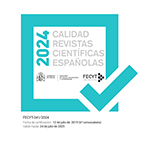Typologically similar Languages: Learning Vocabulary.
Résumé
Second language learning research has proved the importance of L1 as a constant point of reference in hypotheses on L2. This is specially the case when dealing with the acquisition of vocabulary, when the connection between words and concepts is done through L1, especially in the first stages of the learning process. In this paper we will analyse some of the problems related to the acquisition of the vocabulary of Romance languages, especially Italian and Spanish, in two stages of the process: comprehension and production. In comprehension the inter-linguistic similarity between languages allows to activate quite rapidly the high level processes, oriented towards concepts, although sometimes they are hindered due to cases of tricking resemblance (false friends). In lexical production, the interference of linguistic similarities is greater. The risk of fossilization suggests an adequate contrastive approach in the teaching practice, based on the comparison of semantic and formal features, which will allow to keep the two languages distinct from one another. In the last part of this paper, some examples of hispanicisms in present-day Italian will be presented, in which we may observe the humorous connotation of the contact due to proximity and transparency, and almost exclusively linked to the leisure time domain (travelling, sport, music, gastronomy): an aspect to be valued adequately for an intercultural approach to L2 teaching.Téléchargements
##submission.format##
Licence
La revista Cuadernos de Filología Italiana, para fomentar el intercambio global del conocimiento, facilita el acceso sin restricciones a sus contenidos desde el momento de su publicación en la presente edición electrónica, y por eso es una revista de acceso abierto. Los originales publicados en esta revista son propiedad de la Universidad Complutense de Madrid y es obligatorio citar su procedencia en cualquier reproducción total o parcial. Todos los contenidos se distribuyen bajo una licencia de uso y distribución Creative Commons Reconocimiento 4.0 (CC BY 4.0). Esta circunstancia ha de hacerse constar expresamente de esta forma cuando sea necesario. Puede consultar la versión informativa y el texto legal de la licencia.










